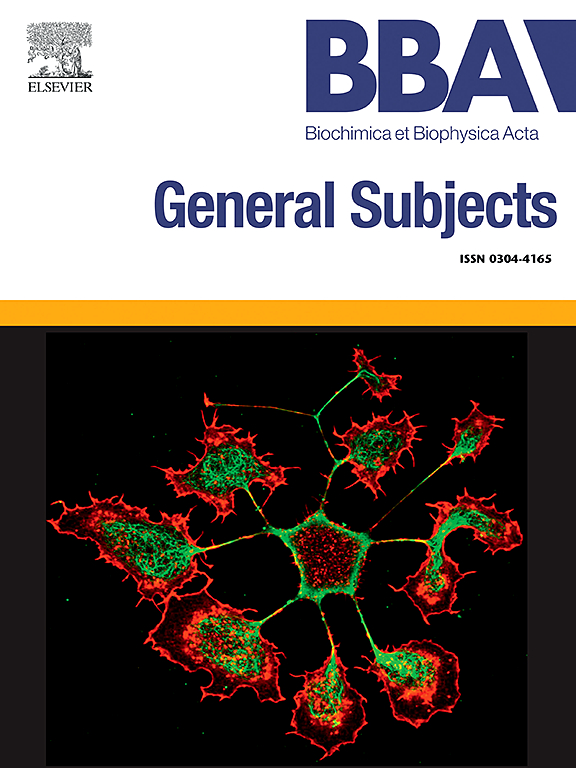Decoding the calcium signal: Structural insights into CBL-CIPK pathway in plants
IF 2.2
3区 生物学
Q3 BIOCHEMISTRY & MOLECULAR BIOLOGY
Biochimica et biophysica acta. General subjects
Pub Date : 2025-05-13
DOI:10.1016/j.bbagen.2025.130819
引用次数: 0
Abstract
Calcium (Ca2+) signaling in plants is a major pathway in transducing diverse environmental stimuli. Calcineurin B-like proteins (CBLs) are one of the unique groups of Ca2+ sensors that transduce the Ca2+ signals by interacting with plant-specific protein kinases known as CBL-interacting protein kinases (CIPKs). In recent years, structure-function studies have provided key insights into the molecular basis of CBL-CIPK signaling and their interactions with the target proteins. The crystal structures of CBL2 and CBL4 have elucidated the architecture of non-canonical EF hands and provided the rationale for Ca2+ binding by CBLs. The molecular basis of interaction of the regulatory domain of CIPKs with CBLs has been established, providing rationale for CBL-mediated activation of CIPKs. The molecular mechanism of fine regulation of CIPK activity under non-stressed conditions and full activation under stressed conditions has been established using crystal structures of CIPK23 and CIPK24. Recently, high-resolution CryoEM structures of Arabidopsis and rice SOS1 led to a comprehensive understanding of its regulation and ion transport mechanism. In this review, major advances in understanding the structural basis of Ca2+ sensing by CBLs, molecular determinants of CIPK activation, and subsequent phosphorylation of target proteins are discussed. Remaining questions that need to be answered for a holistic understanding of the CBL-CIPK network are also discussed.
解码钙信号:植物CBL-CIPK通路的结构见解。
植物钙(Ca2+)信号是多种环境刺激信号转导的主要途径。钙调磷酸酶b样蛋白(CBLs)是一种独特的Ca2+传感器,通过与植物特异性蛋白激酶(称为cbll相互作用蛋白激酶(CIPKs))相互作用来转导Ca2+信号。近年来,结构-功能研究为了解CBL-CIPK信号的分子基础及其与靶蛋白的相互作用提供了重要的见解。CBL2和CBL4的晶体结构阐明了非规范EF手的结构,并为CBLs结合Ca2+提供了理论依据。CIPKs调控域与CBLs相互作用的分子基础已经建立,为CBLs介导的CIPKs激活提供了理论基础。利用CIPK23和CIPK24的晶体结构,建立了非应力条件下CIPK活性精细调控和应力条件下完全活化的分子机制。近年来,拟南芥和水稻SOS1的高分辨率CryoEM结构使人们对其调控和离子转运机制有了全面的了解。在这篇综述中,主要的进展,了解Ca2+传感的CBLs的结构基础,CIPK活化的分子决定因素,以及随后的磷酸化靶蛋白进行了讨论。本文还讨论了为全面理解CBL-CIPK网络而需要回答的剩余问题。
本文章由计算机程序翻译,如有差异,请以英文原文为准。
求助全文
约1分钟内获得全文
求助全文
来源期刊

Biochimica et biophysica acta. General subjects
生物-生化与分子生物学
CiteScore
6.40
自引率
0.00%
发文量
139
审稿时长
30 days
期刊介绍:
BBA General Subjects accepts for submission either original, hypothesis-driven studies or reviews covering subjects in biochemistry and biophysics that are considered to have general interest for a wide audience. Manuscripts with interdisciplinary approaches are especially encouraged.
 求助内容:
求助内容: 应助结果提醒方式:
应助结果提醒方式:


